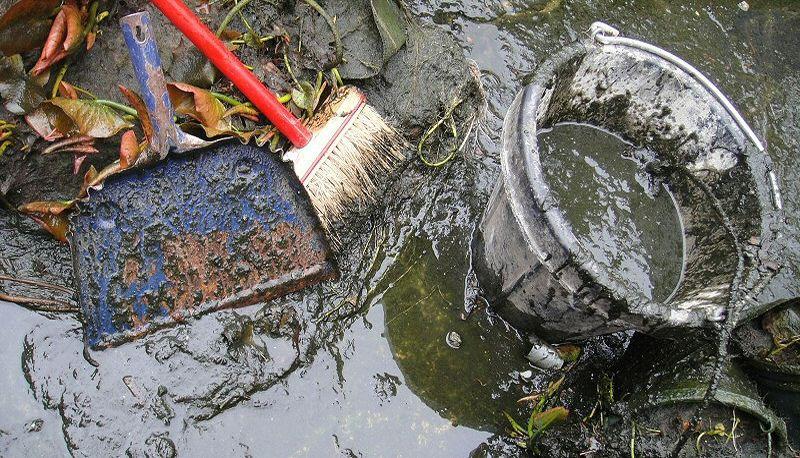Aerating Your Pond In Summer

What a lot of pond keepers do not fully realise is that proper aeration may be the most important part of pond maintenance; but a lack of aeration in the summer period causes the problems in your pond to get worse.
If you see any of the following signs, your pond will need extra oxygen:
- Fish gasping at the surface of the pond or at any entry points for water (Waterfalls, fountains, streams).
- Foul odours - decaying organic matter (Fish waste, plants, sludge) can indicate that there is a lack of oxygen, water movement or filtration.
- Rapid algae development - This can be a sign of poor aeration and filtration.

During summer, the temperatures increase and the water in your pond heats up. This not only encourages algae development and the dreaded green water issues, but your pond also holds less dissolved oxygen. This is even the case when there is a summer thunderstorm; which actually removes oxygen from the air and the surface layers of the pond. So you will need to be innovative in how you add extra air to your pond. We have provided a list below which explains how to reduce the temperature of your pond so that it can hold more dissolved oxygen:
- Provide shade - Trying to cover the surface of your pond in some way will drastically help to cool the water down. While it can be impractical, most of our customers put a Lily into the pond; when they have spread out, Lily's are excellent at covering the surface of the pond and providing shade. They also look colourful and provide a lot of cover for your fish in case of predators.
- Partial water changes - While this is not something we normally recommend, a partial water change can mean you introduce cooler water into the pond, thus reducing the temperatures. But you will need to dechlorinate your water and ensure any missing bacteria is replaced; generally, a water change is something we would only recommend if you are experiencing fish diseases or a severe algae bloom.
We have discussed various methods of introducing air into a pond, but the most popular methods are fountains, waterfalls and plants.
Everything requires more oxygen in summer
An increase in temperature results in greater metabolism for plants (as summer is their growing period), algae and fish. A greater metabolism results in more waste and increased oxygen requirements. Even though your plants produce oxygen during the day, they will take in some of that oxygen at night and actually remove the oxygen from the pond. If you see your fish gasping at the surface of the pond on a morning, this is why. Because of this, a dedicated air pump is one of the most efficient and practical ways of adding oxygen throughout the summer period.
Further to this, the summer heat also increases the amount of oxygen your filter will use. This is because most filters normally contain biomedia; this is where the healthy bacteria in your filter lives. This is also where your Ammonia, Nitrites and Nitrates are broken down and treated. During summer, the healthy bacteria will use more oxygen; this depletes the amount of oxygen in the pond. It is extremely helpful if you can try to get some aeration directly into the filter, though this is not normally possible.

As stated above, a greater metabolism will result in more sludge at the bottom of your pond. As fish waste, plant debris and other organisms decay in your pond, they will form sludge at the bottom. We have a handy blog post on how to remove sludge, which you may find interesting. The sludge at the bottom of the pond can release unhealthy chemicals, like ammonia, nitrites and nitrates. But it also has an anaerobic environment; essentially an area with low oxygen. To resolve the sludge, you will need to manually remove it, use a sludge treatment, add healthy bacteria or improve your aeration.
Conclusion
A lack of proper aeration can be harmful to your pond; but combined with the summer heat, these harmful effects are exacerbated. While you can fountains, waterfalls and plants to improve aeration, the best way is to add a dedicated air pump. Most air pumps, or mechanical aerators, are low wattage and quiet running. This means they are a cheap, quiet and reliable way of properly aerating your pond; keeping your water and fish healthy.
What size Air Pump should you use?
We have provided a guide below on the size of the air pump you should use; though this depends on the fish you have and the amount of water in the pond. Please treat this as advice only, every pond is different.
|
Output of Air (litres per hour) |
No Fish (litres of water in the pond) |
Goldfish (litres of water in the pond) |
Koi (litres of water in the pond) |
| 210 | 1500 | 1100 | 500 |
| 450 | 3000 | 2500 | 1200 |
| 600 | 4250 | 3300 | 1650 |
| 1200 | 8500 | 6600 | 3300 |
| 1800 | 12750 | 10000 | 5000 |
| 2400 | 17000 | 13200 | 6600 |
| 3600 | 25500 | 20000 | 10000 |
| 4800 | 34000 | 26400 | 13200 |
| 6000 | 43200 | 33000 | 16500 |
As always, if you need any assistance from our experienced staff, please email us on info@pondkeeper.co.uk.